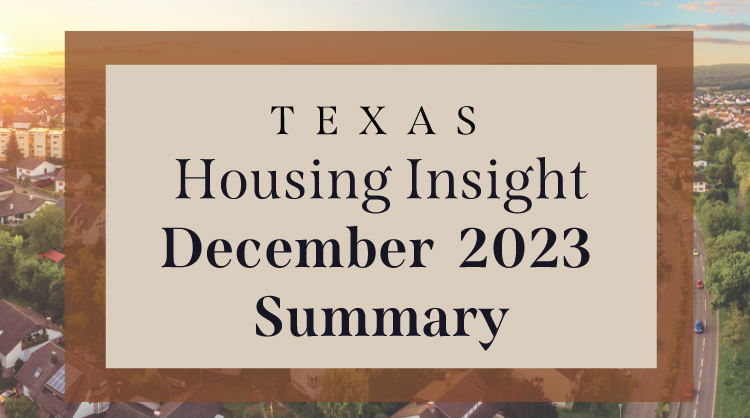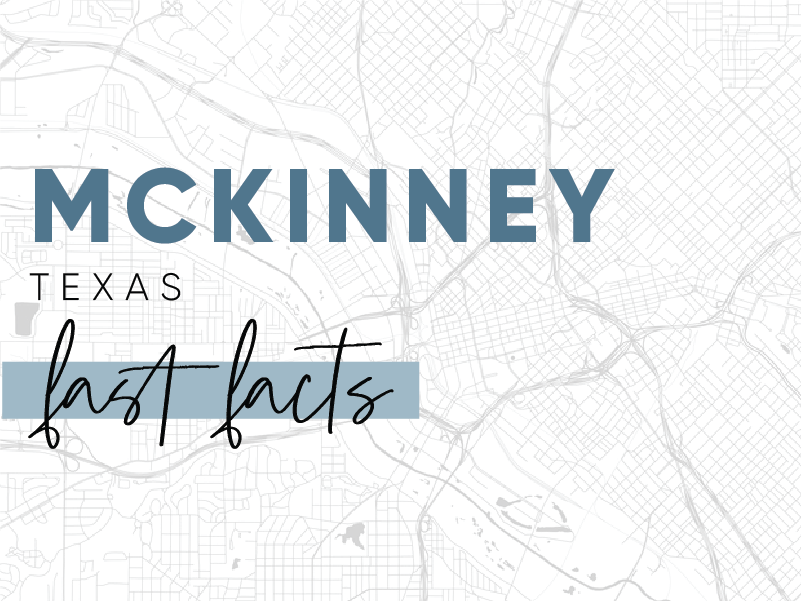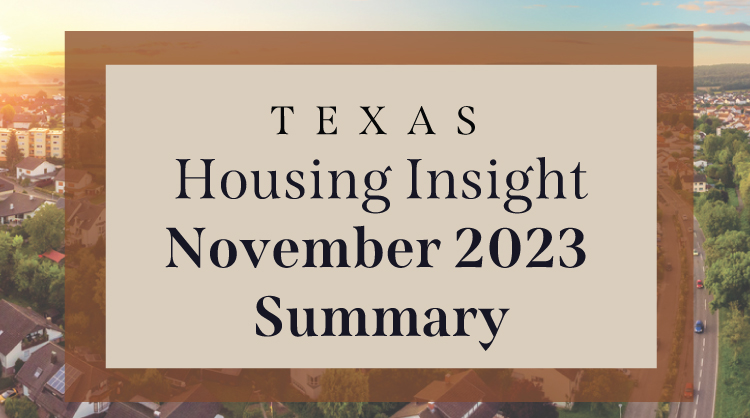Republic Title Tip – Title Insurance: Safeguarding Your Home

When it comes to purchasing a home, the excitement of finding the perfect property can often overshadow the importance of ensuring the title is clear and free of any disputes. Yet, overlooking this crucial step can lead to significant financial and legal ramifications. This is where title insurance steps in as a guardian of your […]
Texas Housing Insight December 2023 Summary

Despite mortgage rates continuing to fall from their elevated level, housing sales haven’t rebounded. The average price has fallen alongside home sales, with homes costing $2,000 less than in November. Single-family starts increased while permits moved downward. Homes sat on the market for longer in December as average days on market reported its first increase […]
Republic Title Tip: Understanding Survey Deletion Coverage in Texas

When navigating complex property transactions in Texas, having a trusted partner like Republic Title can make all the difference. Republic Title has long been recognized as a reliable resource for homeowners and real estate professionals, offering invaluable insights and solutions for various issues, including the critical aspect of survey deletion coverage. In this article, we will […]
Spotlight on McKinney

Whether you’re a lifelong resident or new to the area, there’s always something new to discover about your neighborhood. With that in mind, we created a Fast Facts sheet for cities and neighborhoods all over the DFW area. Our DFW Area fast facts have detailed real estate insights, things to do, places to shop and […]
January 2024 DFW Real Estate Stats

https://youtu.be/dfFMedJvOe4 January 2024 brought a surge in North Texas real estate listings, with Collin County leading at a 25% increase in new listings compared to the same period last year. Dallas County follows suit with a commendable 14% uptick, while Denton and Rockwall counties record rises of 12% and 32%, respectively. Tarrant County, while still […]
Favorite Sweet Spots in DFW

Love is in the air! If you’re looking for a sweet treat for your Valentine but don’t know where to go, fret not because we’ve got you covered with our list of our favorite sweet spots in DFW! Pick out one delicious dessert or make it an evening and indulge your sweet tooth at multiple shops. For a […]
Spotlight on Lewisville

Whether you’re a lifelong resident or new to the area, there’s always something new to discover about your neighborhood. With that in mind, we created a Fast Facts sheet for cities and neighborhoods all over the DFW area. Our DFW Area fast facts have detailed real estate insights, things to do, places to shop and […]
Romantic Restaurants in DFW

Looking for a romantic spot to celebrate Valentine’s Day in DFW? We’ve got you covered! Check out our list of charming restaurants perfect for a memorable evening. Whether you forgot to book or just need some fresh ideas, this guide will help you find the perfect place to wine and dine your special someone. III […]
Spotlight on Las Colinas
Whether you’re a lifelong resident or new to the area, there’s always something new to discover about your neighborhood. With that in mind, we created a Fast Facts sheet for cities and neighborhoods all over the DFW area. Our DFW Area fast facts have detailed real estate insights, things to do, places to shop and […]
Texas Housing Insight November 2023 Summary

The housing market remains tight despite mortgage rates falling from their elevated levels. Home sales decreased just shy of 1 percent month over month (MOM). Prices did not fall alongside sales as most of the state experienced minimal change in prices. Construction permits plummeted in November despite construction starts increasing. Homes sat on the market […]
